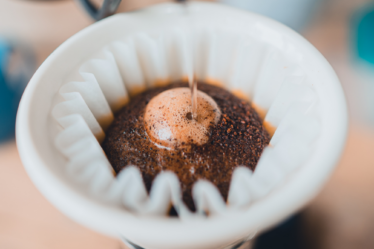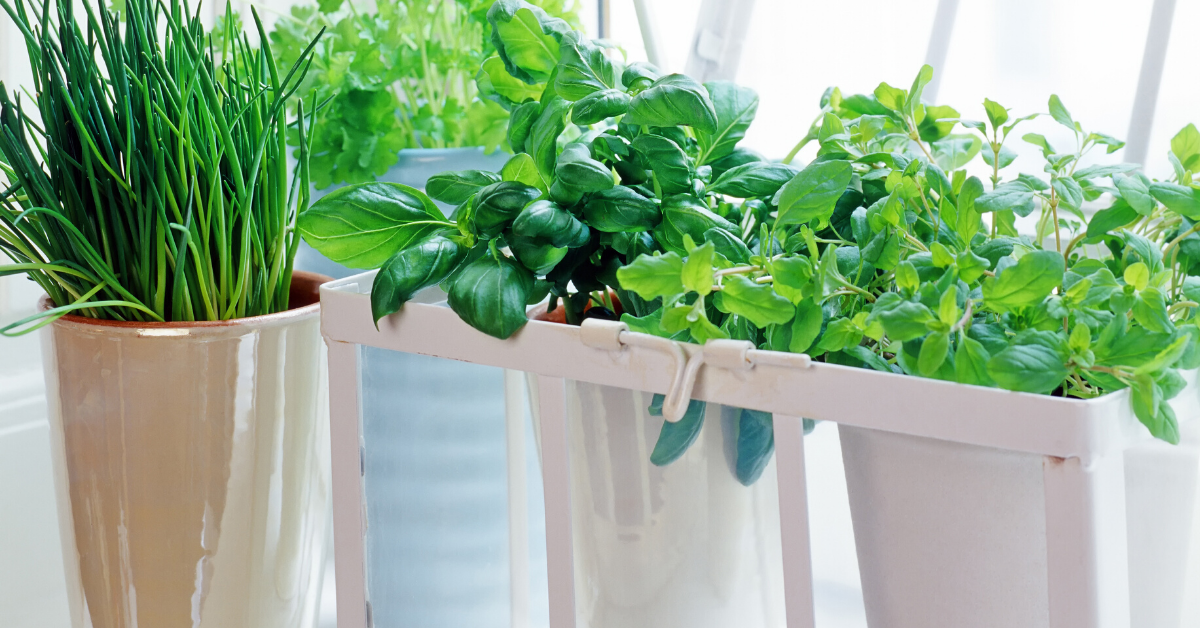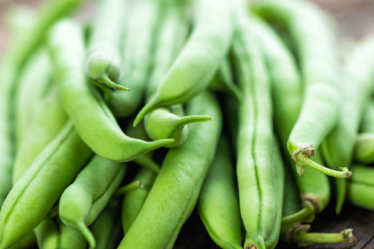
Tomatoes are fascinatingly versatile!
Fresh for your salads, for baking, cooking or simply for garnish – there’s nothing better and more beautiful than a gorgeous red tomato for the table! Now, if that tomato comes from your very own plants, that’s just an added bonus.
The best thing about growing your own tomatoes is that you can always find one or a few of them ready for plucking, ripe from the plants. You’ll not only be saving money by growing your own tomatoes, but you will be able to get your hands on as many as you want, whenever you want them.
If you’ve taken good care of your plants and it is harvesting season, there will likely be tomatoes present on your table at every meal!
What is the Easiest Tomato to Grow at Home?
If you are an absolute beginner or if this is a new hobby, cherry tomatoes are the easiest ones to grow at home.
There are more than 7,500 varieties of tomatoes in the world, but not every variety might be available everywhere. Based on where you live, there might be quite a few options for growing tomatoes, but none of them as easy as cherry tomatoes.
The reason that beginners are advised to start with cherry tomatoes is this: you’ll be able to get multiple harvests with the same plants with this kind of tomatoes.
This means that once your plants mature – which won’t take more than 2 months – the same plants will go on giving fruit for the whole harvesting period. These plants are also easy to maintain and doesn’t need more than regular watering and occasional fertilizing.
Cherry tomatoes can be grown in an outdoors garden, on a raised bed or even in a container or pot inside the home. The size of your garden bed or container might limit the number of plants you can add, but it will not compromise the growth or the taste of the tomatoes in any way.
How to Grow Tomatoes at Home?
- Planting:
Generally, tomatoes are grown from seeds that you can buy in packs from your local garden centers. However, it is also possible to grow entire plants from the tomatoes you buy from a store or the supermarket.
It is relatively easy process if you are going to use store-bought tomatoes. All you have to do is to separate the seeds from a tomato by cutting them, and keep them aside in a closed jar of water to ferment. The seeds need to be washed and planted in a small pot and kept inside, until the seeds begin to germinate. You can use a small yogurt cup or a disposable glass for this purpose. When your tomato plants start to grow in the small pot, it needs to be transferred outside to your garden or to a bigger container.
- Soil:
Tomato plants can grow in almost all kinds of soil except heavy clay-based one. However, the best soil for growing tomatoes is a loamy soil or a sandy loamy soil, as well as soil that’s loose and fluffy. Any kind of soil that you have access to also needs to drain well as tomato plants can’t grow well in neither extremely dry nor wet sand.
Besides, tomato plants require soil that’s neither acidic nor alkaline, i.e. in a neutral or near-neutral kind of soil. To make soil neutral, the pH level can be raised by adding agricultural lime to the soil. At the same time, the pH level can be lowered by adding sulfur or ammonium sulfate-rich fertilizer.
- Fertilizer:
Tomato plants need a lot of nutrition to grow and mature, and more to bear the perfect tomatoes. However, before choosing a fertilizer, it is important to test the soil. Gardening soil in a lot of regions all over the world are high in nitrogen which makes it difficult to use just any regular fertilizer on tomato plants.
If the nitrogen level in your soil is high, it is important to choose a fertilizer that’s slightly low in nitrogen but high in phosphorus. The chemical component of the fertilizer should be something around 5-10-5 or 5-10-10.
On the other hand, if your soil is lacking nitrogen, a good fertilizer would be an 8-8-8 or 10-10-10 one.
If testing your soil isn’t possible, it is safe to simply assume that the soil you are using is a balanced one and use a general fertilizer that’s 10-10-10.
- Sunlight
Tomato plants also need a lot of sunlight and heat; they’ll need at least 4-5 hours of direct sunlight every day, or at least 14 to 18 hours of artificial plant lightning. If you are keeping tomato plants in containers, they should ideally be outside on the rooftop or in a balcony, or near a window that gets enough sun and light.
- Watering
Tomato plants need to be watered at least twice every day, especially when they are growing. Missing watering for a few days can lead to calcium deficiency and for the blossoms to rot in the trees. The plants will need fewer watering once the tomatoes start to be visible.
Tomato plants have specific technique for watering. The soil surrounding the tomato plants need to be watered thoroughly so that the water is enough to reach the bottom of the soil and wets all the roots. At the same time, the stems need to be watered, but not the leaves or the flowers. If water lingers on the leaves, flowers, blossoms and fruit of tomato plants, it will ultimately lead to rot.
- Spacing:
Before germination, seedlings need plenty of space, which means it is best to place the seeds in individual pots until they germinate. Small yogurt cups or disposable glasses filled with potting soil is enough for the seeds to germinate under favorable conditions.
After each seed grows into a tiny plant, they can be planted together in a larger container or pot, but the plants still need to be spaced accordingly. Giving your tomato plants adequate space is an important part of their growth.
When replanting your tiny tomato seedlings into the ground or to a larger container, it is important to make sure that the stem has been properly buried under the soil. Only the top leaves should be visible above the ground for the roots to start developing under the soil.
- Trimming and Pruning:
When the tomato plants start growing, the bottom leaves need to be trimmed regularly. Besides, uckers can develop in the branch joints of tomato plants that can be easily pinched and removed. Suckers take away nutrition from the tree and doesn’t even bear fruits.
Frequently Asked Questions About Tomato Plants
- Are Banana Peels Good for Tomato Plants?
Banana peels are actually a good fertilizer for most plants, but mostly for tomato plants. This is not because of the nutrition that banana peels contain, rather the ones that they don’t contain.
Banana peels – although rich in potassium – have absolutely no trace of nitrogen in them. Although plants need a steady source of nitrogen for the soil, too much of it as a fertilizer leads to a lush plant with very little fruit. Since banana peels doesn’t have any nitrogen in them, they are ideal fertilizer for vegetable plants like tomatoes.
Banana peels are also a rich source of calcium, which is a great nutrition to stop leaves, blossoms, and fruits from rotting.
- Is it Better to Water Tomato Plants in the Morning or Evening?
When your tomato plants have matured and started producing fruits, they need to be watered only once, and the best time to do so is in the morning. In fact, it is better to water your tomato plants as early in the morning as possible.
The reason behind this is simple: the water needs to make its way to the bottom and wet the entire soil content before the day gets hot. Before the sun reaches its highest peak of temperature at noon, your tomato plants need to have all the necessary moisture inside it.
If you are too late to water your plants in the morning, i.e. if you wait until the sun is already up and hot, any water you pour into the soil will dry up before the roots can get wet. This will cause the root to get dehydrated throughout the day, damaging the fruit.
Tomato plants shouldn’t be watered in the evening if you live in a cold climate. When the sun sets and the temperature drops, the water inside the soil will cool and harm the roots of the plants.
- Should You Remove Lower Leaves of Tomato Plants?
This is a unique point of care of tomato plants: after the plants reach a certain height, the leaves from the bottom needs to be removed.
After tomato plants reach a height of 3 feet, it starts growing and spreading branches all around. Only the branches at the top bear tomatoes, leaving the bottom branches quite unnecessary. These bottom leaves only take in the nutrition from the soil without contributing to the harvest.
There’s another reason that the bottom leaves of a tomato plant are removed. It is usually the bottom leaves that get eaten by slugs or start to yellow over time, with constant contact with the soil. The bottom leaves are also a way for slugs to reach the top portion and the fruits of a tomato plant, which makes these leaves – not just unnecessary – but dangerous for the plant’s health.
- Are Coffee Grounds Good for Tomatoes?
Just like banana peels, coffee grounds are also a great fertilizer for tomato plants. Tomatoes like slightly acidic and warm soil, and coffee grounds have just the right amount of acid for these plants.
Used coffee grounds – unsweetened and cooled – have an acidic pH of 6.8, which is just right for tomato plants.
- Do Tomatoes need Deep Pots?
If you want to grow your tomatoes in a container or a pot, it’s not a bad idea. Tomato plants need appropriate spacing, but they will be perfectly comfortable in pots that are 12” deep. 5-gallon bushels, buckets, baskets or half barrels can easily be used to grown individual tomato plants, but for multiple plants, you’ll need a much wider garden box with the same depth.
- What is the best month to plant Tomatoes?
Tomato plants require warm weather and warm soil, so the best time to plant them would be around early summer or late spring. Depending on where you live, they need to be planted in the months when direct sunlight will be available for at least 6 to 8 hours every day.
- How Can I Get My Tomato Plants to Produce More Fruit?
There are a few ways that tomato plants can be encouraged to produce more, including:
- Avoiding to plant seeds that come with heavy root-bounds.
- Planting tomato plants in warm soil.
- Protecting tomato plants from cold and frost.
- Planting the trees deep into the ground.
- Adding phosphorus-rich fertilizers.
- Watering deeply.
- Does Picking Tomatoes Make More to Grow?
Yes, picking ripened tomatoes make more to grow from the same branch. Once the tomatoes start to ripen, plucking one will make the others ready quickly and more tomatoes to grow in their place.
- Do I Soak Tomato Seeds Before Planting?
Tomato seeds don’t necessarily need to be soaked it water but doing so will quicken the germination process. The water softens the seed and forces it to germinate more quickly.
- How Long Does It Take for a Tomato Plant to Grow?
From germination to harvest, a tomato plant needs 20 to 30 days for the process to be completed.
- How Do I Know When My Tomatoes are Ready to Pick?
Tomatoes are ready to be picked when they gradually start to turn a reddish shade and soften a little. The tomatoes that are picked from trees aren’t completely ripe, but in the process of ripening.
- Should I Pick my Tomatoes Before they Turn Red?
Tomatoes should be picked not when they are completely red, but when they are turning red from green. Tomatoes will continue to ripen even after they are picked, so harvesting them before they are completely red wouldn’t hurt them.
Conclusion
Tomatoes are one of the easiest plants that can be grown in a garden or in a container, making it the perfect plant for beginners. Having tomato plants at home will give you a steady supply of tomatoes for your table for months, hence so many gardens prefer to start their gardening journey with tomatoes.


